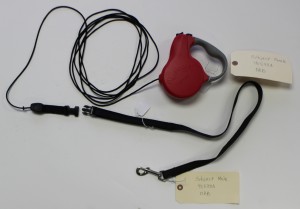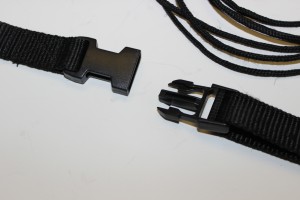A man was walking his dog using a hand held retractable dog leash when the dog “took off at a dead run.” A split second later, the man heard a “pop” and then felt something strike him in his left eye. After being hit in the eye, he discovered that the leash’s plastic buckle had separated, causing the leash to retract and strike him resulting in a serious eye injury. This occurred despite the fact that the dog weighed about 40 lbs and the leash was advertized as being suitable for dogs weighing up to 100 lbs.

Technology Associates was hired to investigate the accident to determine the cause of the failure and to evaluate the design of the retractable leash. Our investigation included accident statistics research, patent research, and exemplar leash testing. The investigation revealed that there are a number of known hazards related to retractable dog leashes, most of which are associated with the possibility of the extended leash retracting suddenly. The hazards to users and bystanders created by an uncontrolled leash retraction include impact injuries (particularly to the face and eyes). Case narratives of retractable dog leash accidents spanning the years 2002 – 2009 which resulted in emergency room visits taken from the Consumer Products Safety Commission’s (CPSC) National Electronic Injury Surveillance System (NEISS) include numerous accidents of this type.

In order to understand the subject accident and to evaluate the hazards associated with the subject dog leash, we tested its retraction speed and found that after separation, the speed of the plastic buckle on the end of the rope leash could have reach speeds in excess of 35 mph at the moment of impact. This, along with evidence of prior incidents of eye injuries with similar retractable leashes, indicated that the energy released during such an event is sufficient to cause serious eye injuries. Furthermore, the entire retraction event occurred in approximately ½ a second, which is too short of an interval to expect a user to react to an unexpected stimulus and take evasive action. Next, we tested the strength of the plastic buckles that were used to connect the main portion of the leash to the short leash that connected to the dog’s collar. During these tests we found that the plastic buckles would separate at tensions ranging anywhere from 30 to 96 lbs. Based on some surrogate testing, we also established that a dog is easily capable of producing peak leash tensions of more than twice its own weight. Therefore, it should have been no surprise that the plaintiff’s 40 lb dog was able to produce a large enough load to cause the buckle to separate and the rest of the leash to retract uncontrollably. Furthermore, the fact that this leash was advertised as appropriate for 100 lb dogs, but actually could fail at forces as low as 30 lbs, indicated that the leash was under-designed, had no factor of safety and was likely to fail, even when used with dogs that weighed far less than 100 lbs.
In addition to this basic structural shortcoming, our design analysis showed that the leash failed to meet some basic universal product safety design principles and standards which have been developed in an effort to improve product safety. In general, these principles describe the process by which product hazards should be identified and evaluated to determine the associated degree of injury risk and the ways in which those risks can be reduced. Once hazards have been identified, they should be reduced in the following order of priority: 1) eliminate by design, 2) safeguard and 3) emphatically warn/train. With respect to retractable dog leashes, the hazard of an uncontrolled retraction was well known at the time the product was designed and manufactured. One way this hazard could have been mitigated was by altering the design of the retractor in such a way that the maximum possible retraction speed was limited to a safe level. This concept lead us to propose the incorporation of a rotational damper into the retractor design to dampen the stored energy in the leash so it is dissipated more slowly and safely. Our research also revealed that such a devices had in fact, already been proposed and patented as US Patent 7,040,257. In light of the above analysis, the engineers at Technology Associates determined that the subject dog leash was defectively designed and those defects resulted in the plaintiff’s injury.
After our engineering report was disclosed to the defendant, the plaintiff’s attorney was able to negotiate a $1.3 million settlement.